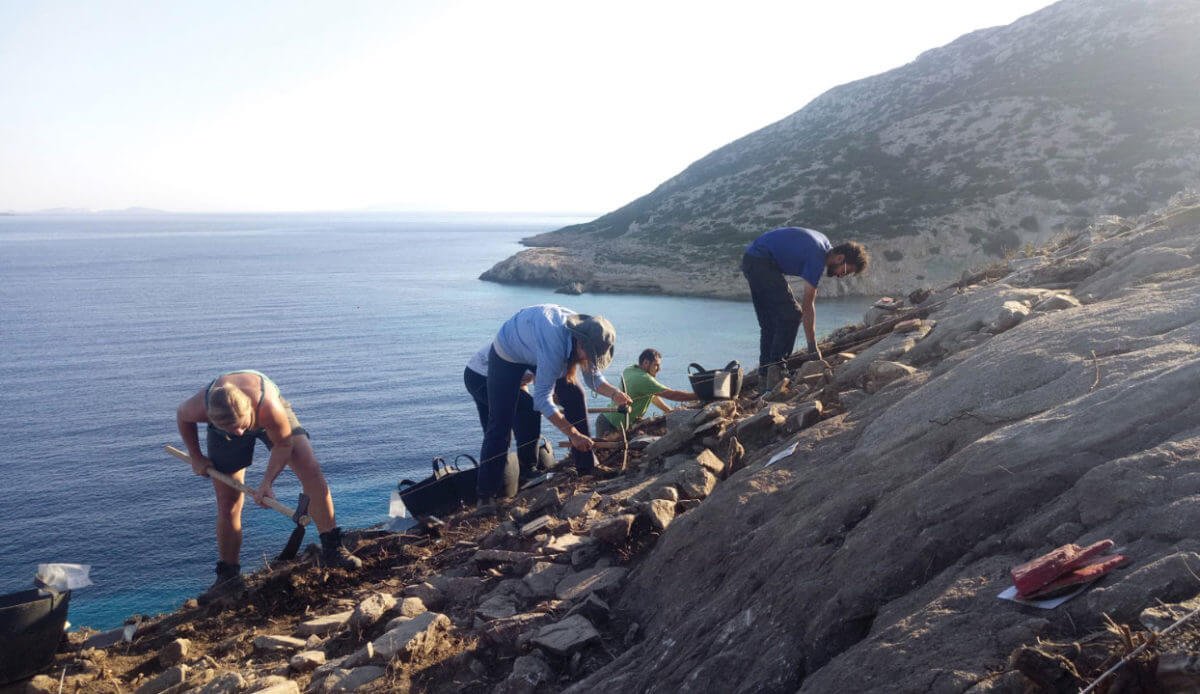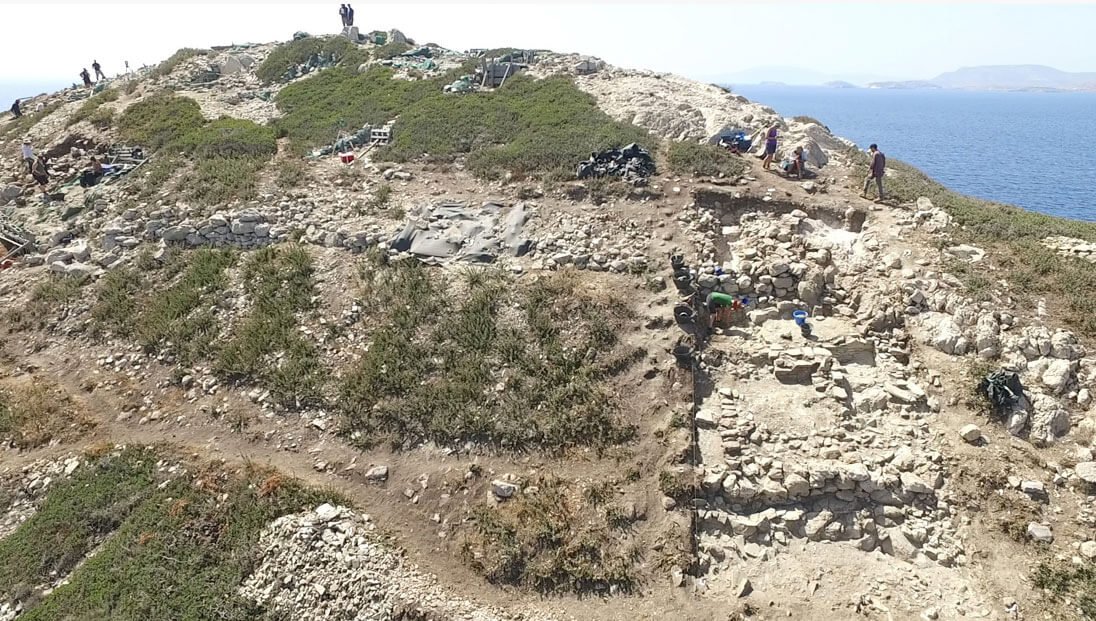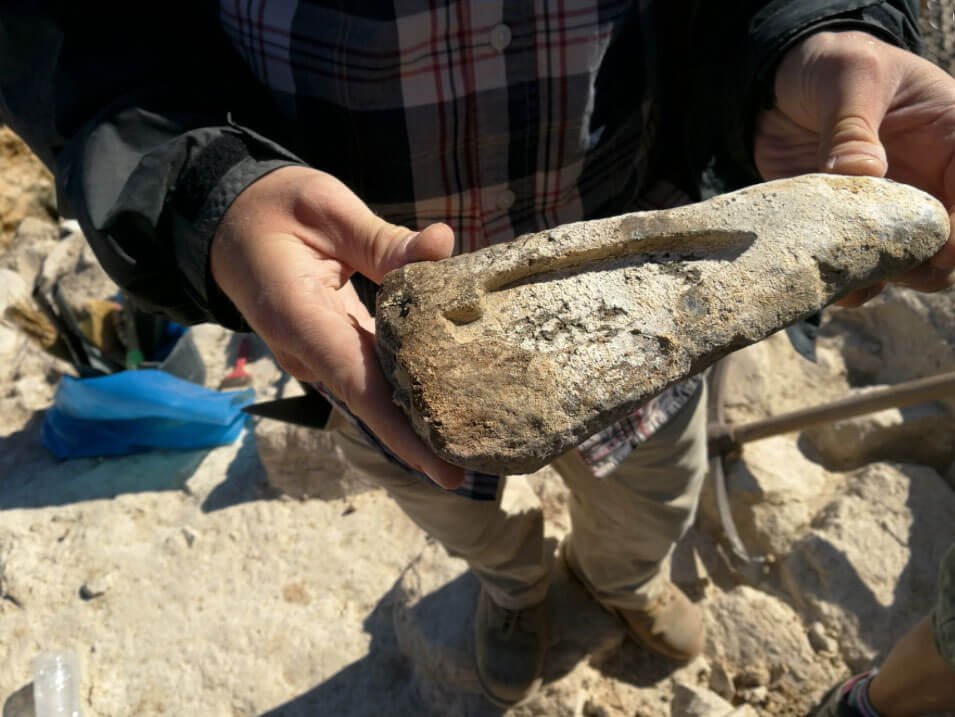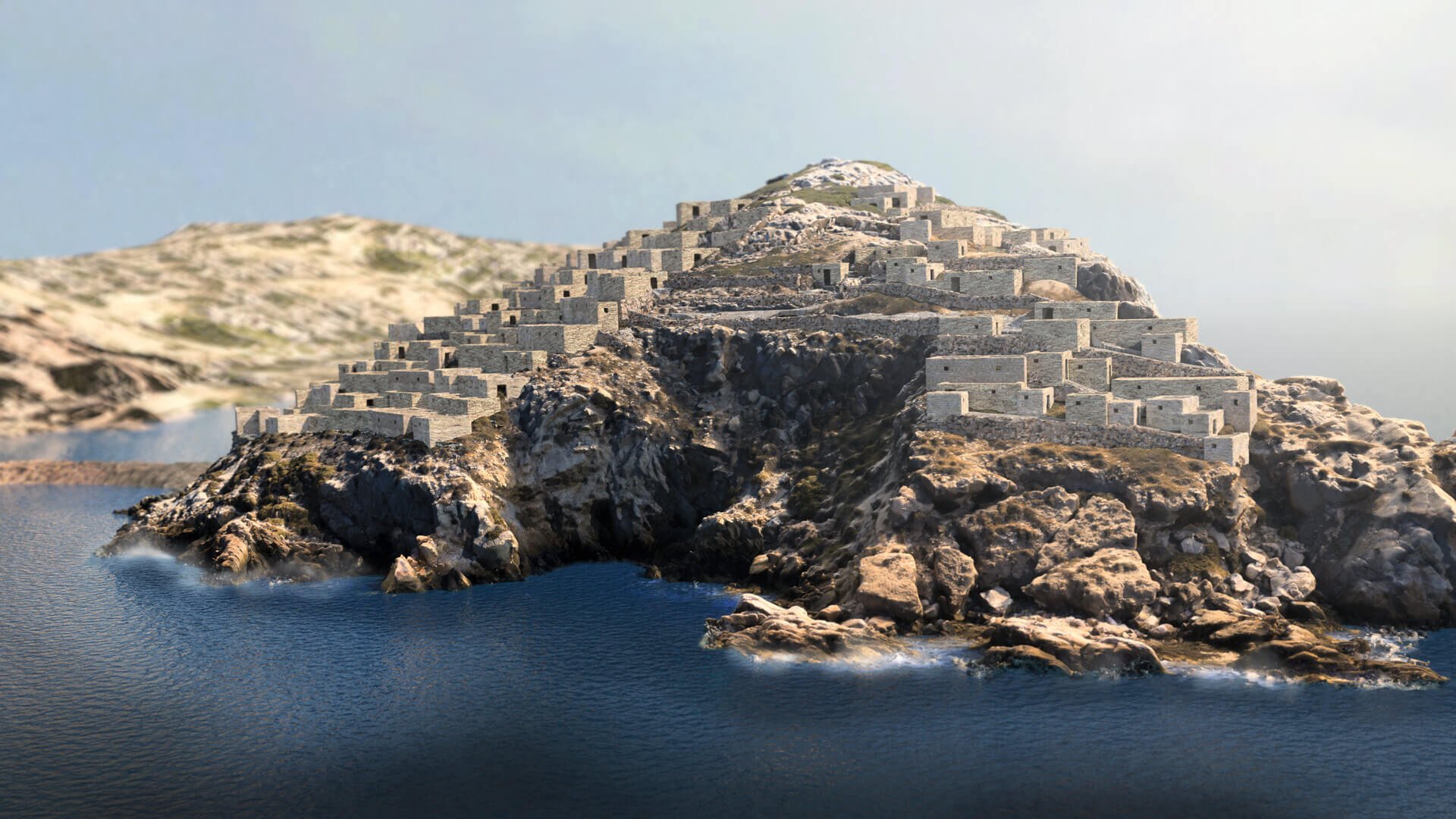BY THE ARCHAEOLOGIST EDITOR GROUP
At least 4,000 years ago, builders carved the entire surface of Daskalio, the ancient natural promontory of the island of Keros, which is shaped like a pyramid.
They fashioned it in levels, which they covered with 1,000 tons of special imported glittering stone to give the appearance of a huge stepped pyramid, rising into the Aegean, forming the most imposing man-made structure in the entire Cyclades archipelago. But beneath the surface of these levels lay something equally unique: Archaeologists from three different countries, participating in an ongoing excavation, have discovered evidence of a complex of drainage tunnels – built 1,000 years before the famous Minoan palace plumbing. Knossos-, as well as traces of advanced metallurgy.
The above was published on its website by the Guardian, referring to the continuation of a particularly interesting excavation that is constantly bringing new impressive findings. The publication goes on to provide information about the area: Daskalio, a small rock island today next to Keros, with which, 4,500 years ago, it was joined by a small passage; and the island that, in the 3rd millennium BC, was a very important sanctuary where complex rituals took place.
3D visualization of the ancient village on the islet of Daskalio. Credit: Greek Ministry of Culture and Sports
Lord Colin Renfrew, co-director of the excavations, founding director of the Macdonald Institute of Archaeological Research, Cambridge, and one of the world's most distinguished archaeologists and researchers, has declared that Keros is the "world's oldest island sanctuary". In fact, in the interview he gave at the beginning of September in Greek media on the occasion of his eightieth birthday, he said, among other things, "There are other island sanctuaries in the world, but none are as old as Keros."
In previous excavations carried out in Keros by the Cyclades Antiquities Ephorate, in collaboration with the University of Cambridge and the Cyprus Institute, thousands of Cycladic marble figurines, which had been deliberately broken elsewhere and brought to the island, were brought to the surface. According to the publication, the construction, as well as the maintenance of the settlement, should have been done through a community effort. The now-abandoned slopes of Daskalio were once covered with buildings and constructions, which suggests that 4,500 years ago it was one of the most densely populated places in the Cyclades, even though the place was not self-sufficient in food and raw materials, which had to be imported from somewhere else.
Professor Colin Renfrew on the summit of Daskalio (source: Ministry of Culture and Sports/British School at Athens).
The first signs of metalworking were discovered 10 years ago, while more recent finds have brought to light two workshops filled with metal scraps and artifacts, including a lead axe, a mold for bronze knives, and dozens of ceramic fragments of metallurgical equipment, including a mouthpiece for a blowtorch. Later, at the end of the earlier excavation period, an intact clay oven was found. According to excavation co-director Michael Boyd, from the University of Cambridge, metallurgical know-how was apparently concentrated in Daskalio at a time when access to both skills and raw materials was very limited, citing finds linked with the origins of urbanization.
The pyramidal levels would have shone in the Greek sun, visible from far away, as they were clad in white marble from Naxos, which is 10 kilometers away. The complex of drainage tunnels was discovered when archaeologists excavated an imposing staircase to the lower levels, and is being investigated as to whether it is fresh water or sewage.













